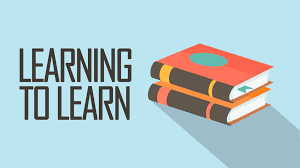LEARNING SECOND LANGUAGE AT SCHOOL AND AT HOME
LEARNING THE SECOND LANGUAGE AT SCHOOL AND AT HOME
Hello, guys welcome back to my blog. This blog will talk about 'LEARNING SECOND LANGUAGE AT SCHOOL AND AT HOME'
Bilingualism
Having or using two languages especially as spoken with fluency characteristics of a native speaker.
The ability to speak a second language while following the concepts and structures of it rather than paraphrasing our mother tongue.
Early Bilingualism
The "simultaneous acquisition" is the process of the earliest chance of learning two languages or more. It starts at birth.
Bilingual children generally appear to develop more slowly in linguistic terms. They may say their first words a little later and learn fewer words and grammatical structures.
Bilingual children are more aware of the language system as bilingualism helps in Meta-linguistics awareness, the ability to reflect on and manipulate the structural features of the language. They are also more conscious of language structures and patterns and learn to reflect on these earlier.
Learning a second language in the playground and at school.
Familiar routines and games offer great opportunities for hearing the same language again and again and learning to take part in simple conversation.
In the case of school language, it takes much longer to catch up with the academic language skills necessary to participate in school discourse.
Three are two ways that children may learn a second language that is simultaneously or sequentially
Simultaneous Second Language Learning
•include children under the age of 3 who are exposed to two languages at the same time.
• Before 6 months of age children learn both languages at similar rates and do not prefer one language over the other as they build separate but equally strong language systems in their brains for each language they hear. These separate systems allow children to learn more than one language
without becoming confused.
Sequential Second Language Learners
Include children who have become familiar
with one language, but are then introduced or required to learn a second language.
• It can occur at any age.
Four stages of sequential second language learning
1. Home language use
2 . Silent period
3. Telegraphic & Formulaic Speech
4. Productive language




Ulasan
Catat Ulasan